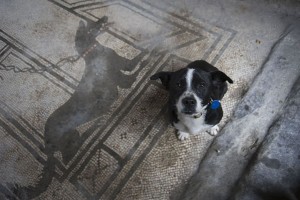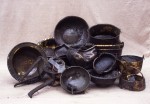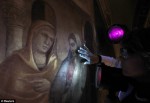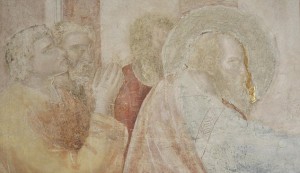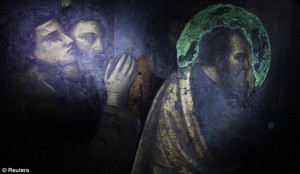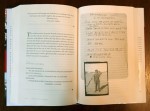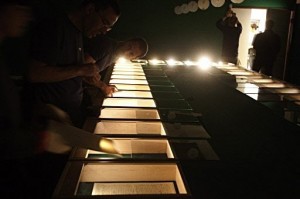The Cave Canem project launched last November to microchip, treat and neuter the stray dogs that populate the ancient city of Pompeii. When last we saw our brave canine heroes, they were still in the process of being rounded up by the Italian animal welfare groups and the adoption website didn’t exist yet.
Now all the rounding up has been done and the website is up and running. On the site you will find a lovely photo gallery of the pups up for adoption (with the ones already adopted marked as such). They all have adorable Pompeiian names.
The best part of the site, though, is the backstory written by one Stella Pende for each dog. They tie each dog in to the city of Pompeii and its mythology. The anthropomorphic characterization is gloriously lurid at times.
Meet Polibia:
In the quarter of the ancient baths at Pompeii, where I roam freely, they call me Polibia. I am two years old and like each respectable member of my family, I am a freed-slave and when possible I choose this humid warmth area that gives body to my fur and soothe my poor tired paws. My doggy friends at Pompeii say that I am magic because, suddenly one morning, my tail awoke with a white wisp, but they don’t know the truth. One night at the bath I was immersed in the warmth of the pool, when, Apollo the Beautiful, revealed himself showing his muscles and vigour on the purple glitter coach, wrapped in a cloud of smoke. But he was also very annoyed to find a hairy freed-slave in his favourite waters. So, furious, he caught me by the tail and threw me out of the bath and this divine touch lightened my tail tip.
Mythological backstory animal abuse! Damn you, muscular and vigorous Apollo. Damn you and the purple glitter coach wrapped in a cloud of smoke you rode in on.
Sadly only the first page of the dog stories is translated into English. The rest of them are just as fabulous, so fire up Google Translate and go to town.
If you’re in Europe and/or able to get to Italy in person, you can apply to adopt one of these historic honies. The requirements and forms you need are on this page. If I could, I would snap them all up myself.
